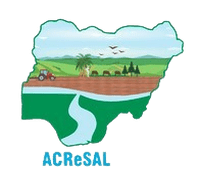Most of the challenges of dryland management are to be found at the local level, where they constitute the day-today reality of communities and farmers. Communities need support to be more resilient and communities 30 The Wetlands Act requires states to perform inventories of the status of wetlands and riverbanks to define priority interventions in these areas. The World Bank Agro-Climatic Resilience in Semi-Arid Landscapes (ACReSAL) (P175237) Page 20 of 125 and households need targeted investments to put new approaches into effect. In targeted microwatersheds, this component will support the following subcomponents:
B1. Community Strengthening: This subcomponent aims to strengthen the capacity of communities for sustainable natural resource use and management. Support will be provided to “local project implementation committees”, or their local equivalent. Building on the outcomes of the higher-level strategic watershed planning (Subcomponent A1), micro-watershed planning will be supported to prioritize investments. Social cohesion and peace building will be strengthened by addressing gender inequalities, the needs of vulnerable and marginalized groups, and by improving conflict resolution capacities at the local level, all through joint planning and implementation across stakeholder groups to foster mutual understanding. Activities such as participatory planning processes, capacity building, and establishment of community revolving fund (CRF) management committees will be implemented in a gender-inclusive manner to help improve women’s voice and agency in participating communities.
B2. Community Investments: This subcomponent will finance physical investments as prioritized through the micro-watershed planning process. Although the menu of potential investments will vary from community to community based on their priorities, three groups can be described:
-
Landscape restoration in community-selected degraded areas will promote hybrid agroforestry models on communal lands, using plant species chosen by the communities. These investments produce non-timber forestry products, such as: fodder, acacia (gum Arabic), balanites, beekeeping, nuts, mushrooms, and grains such as millet and sorghum. Improved pasture and rangeland management and restoration could also be included. Prioritized community infrastructure investments can also be supported.
-
Climate-smart rainfed agriculture. Support to farmers at the household level to optimize climatesmart rainfed agriculture practices, particularly relating to crops. Investments could include water and soil conservation, optimizing farm management (improved crop varieties, Integrated Pest Management; soil and water testing technologies), controlling invasive species, and supporting value chains. The project will support these investments by providing loans from CRFs to registered community/farmer groups and cooperatives. The project will address gender inequalities in access to funding for enterprises by prioritizing subproject proposals from groups/cooperatives that have women beneficiaries as members and/or leaders.
-
Farmer-led irrigation development (FLID). North and central Nigeria is rich in shallow groundwater resources, with about 7 million ha of cropland with groundwater resources within a depth of 25 m. The project will support farmers at the household level to increase irrigation, including small-scale solar-powered irrigation.
